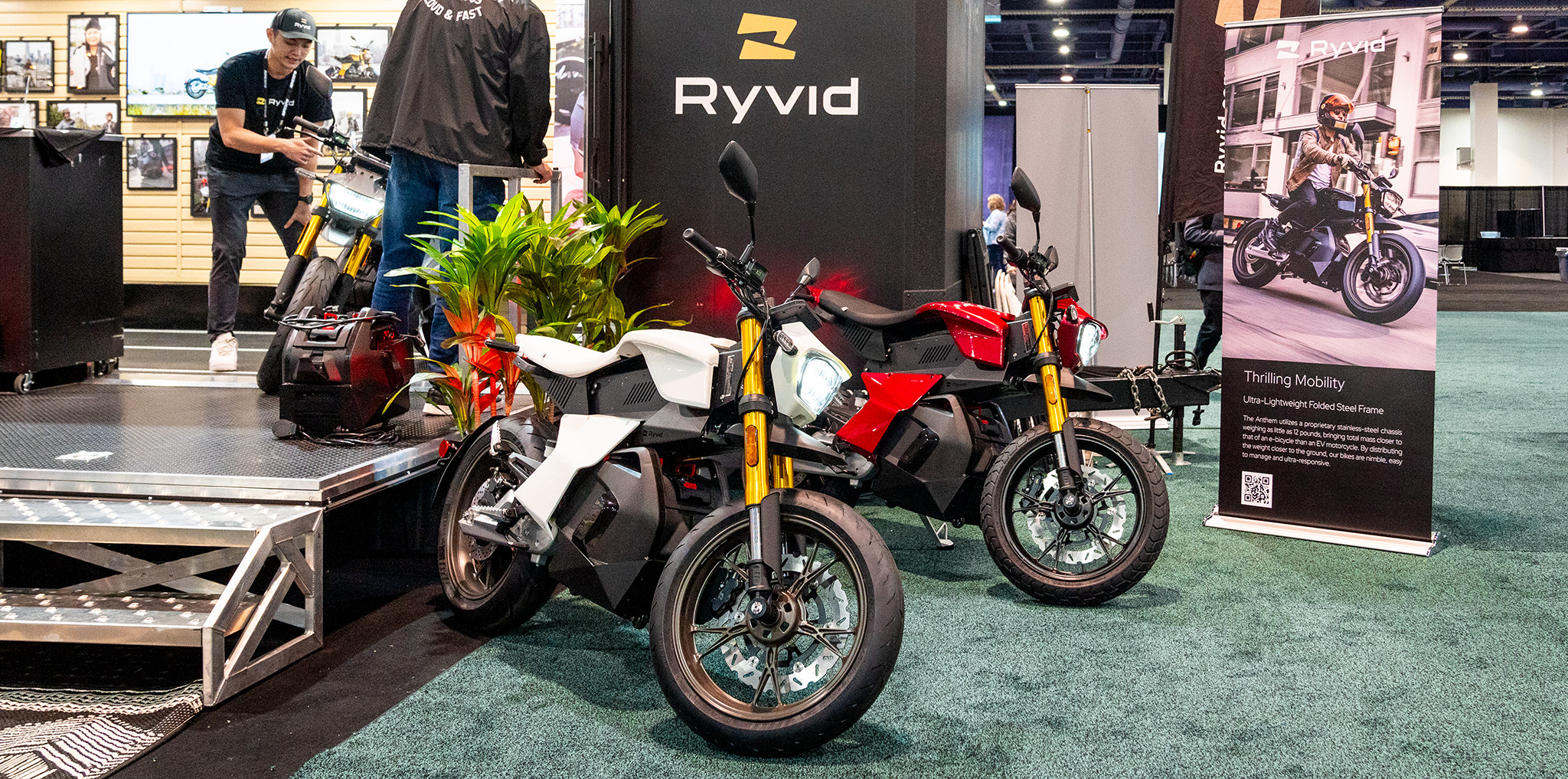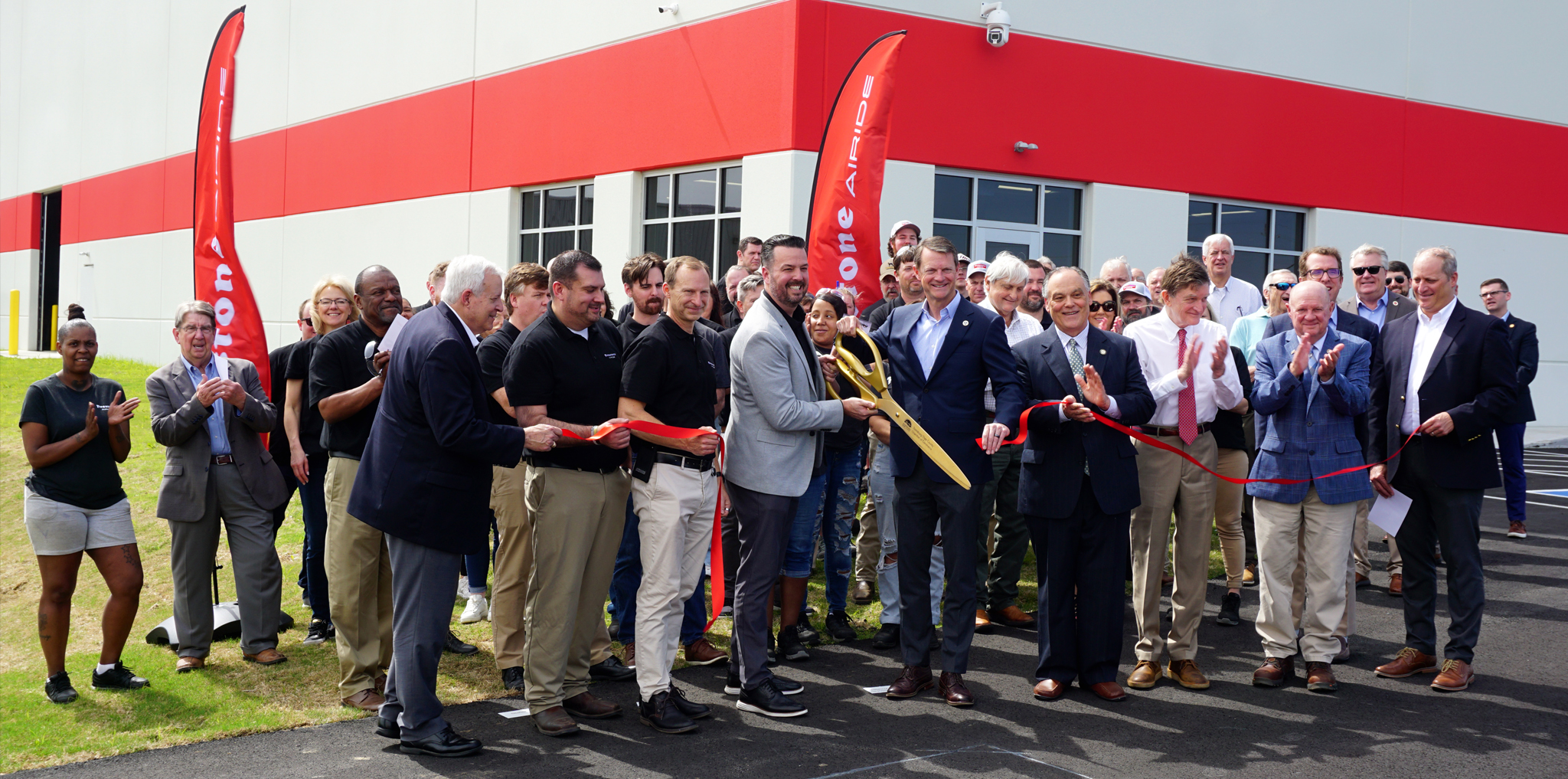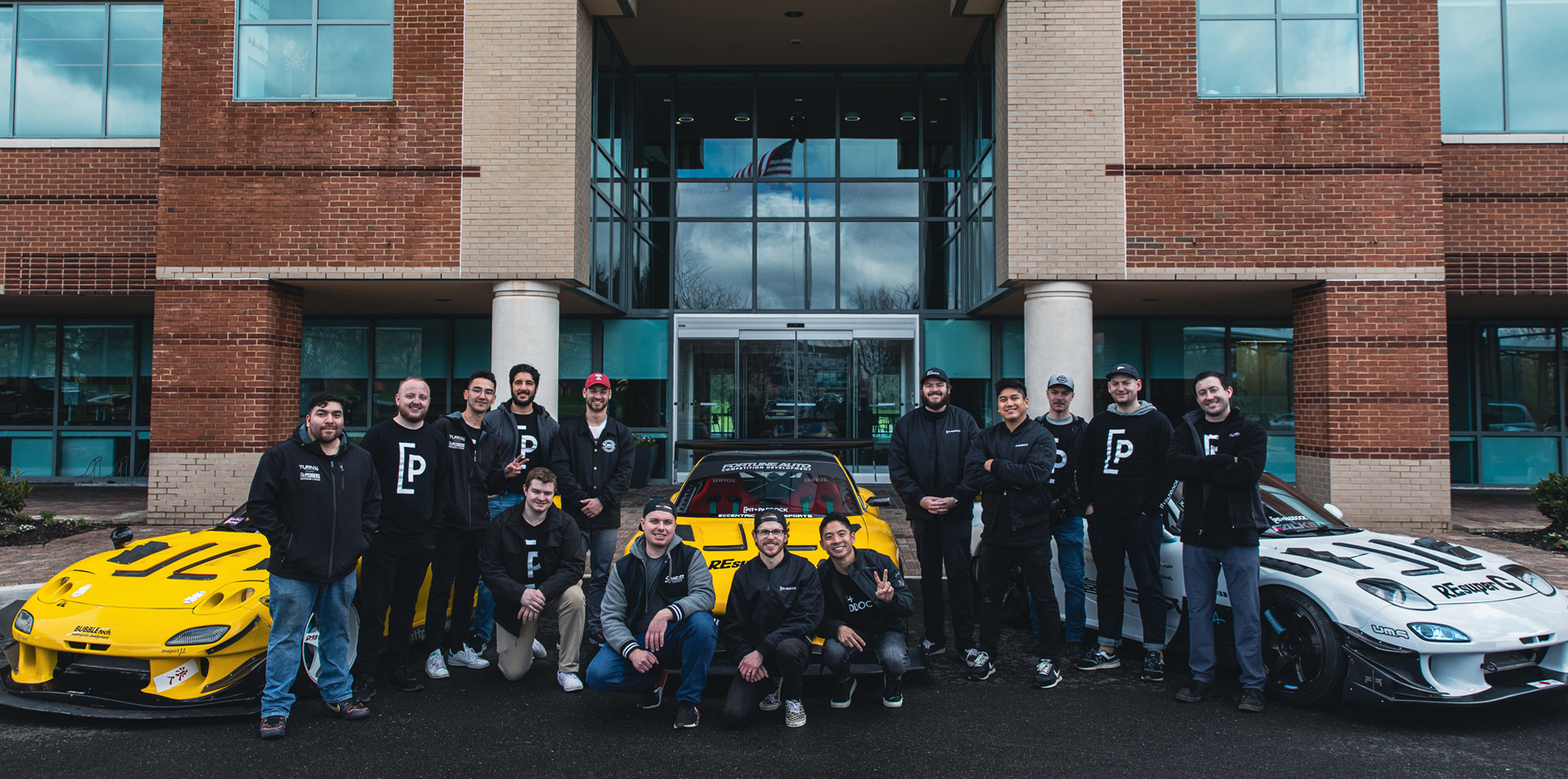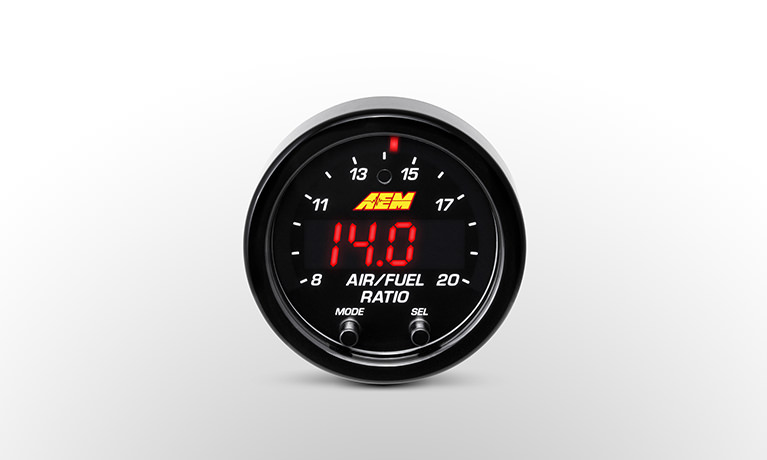
Guest Author: Lawson Mollica of AEM Electronics
If you are involved in the late model performance world, then you’ve no doubt heard about – and most likely used – a wideband Air/Fuel Ratio (A/F ratio) sensor controller. Late model cars use these devices to monitor the A/F ratio the engine gets from its fuel delivery system, be it a carburetor or modern engine management system. On gasoline, an A/F ratio lower than 14.64:1 (14.64:1 by mass is the stoichiometric ratio for typical gasoline) is considered rich and an A/F ratio higher than that is considered lean. For most normally aspirated engines an A/F of 12.2 to 13.1 at maximum load is considered safe enough to prevent engine damage without a significant loss of power. Getting much leaner than that at maximum load will not generate a significant gain but there is a high probability of engine damage (a side note is that with GDI engines, the A/F can be very close to stoichiometric).
Stoichiometry refers to the chemical balance between reactants where the total mass of the two reactants (gasoline and air in this case) equals the end product by mass. Too much of a rich condition means that too much fuel is present in the exhaust gas, which can lead to fouling, carbon buildup and a loss in power. A lean condition at full engine load means that too little fuel is present in the exhaust gas, which can lead to engine detonation, excessive heat and ultimately engine failure—definitely a condition that you want to avoid.
The A/F ratio varies with engine operating conditions. At light throttle where there is little combustion chamber pressure, stoichiometry for the fuel ensures good fuel economy, reduced emissions and a lower chance of fouling spark plugs with no detrimental effect on engine power. At idle, slightly rich of stoichiometry ensures stable idle and lower emissions. As mentioned above regarding NA engines, a couple points richer in A/F ratio will yield good engine power and reduce the chance of engine damage by detonation and excessive engine heat.
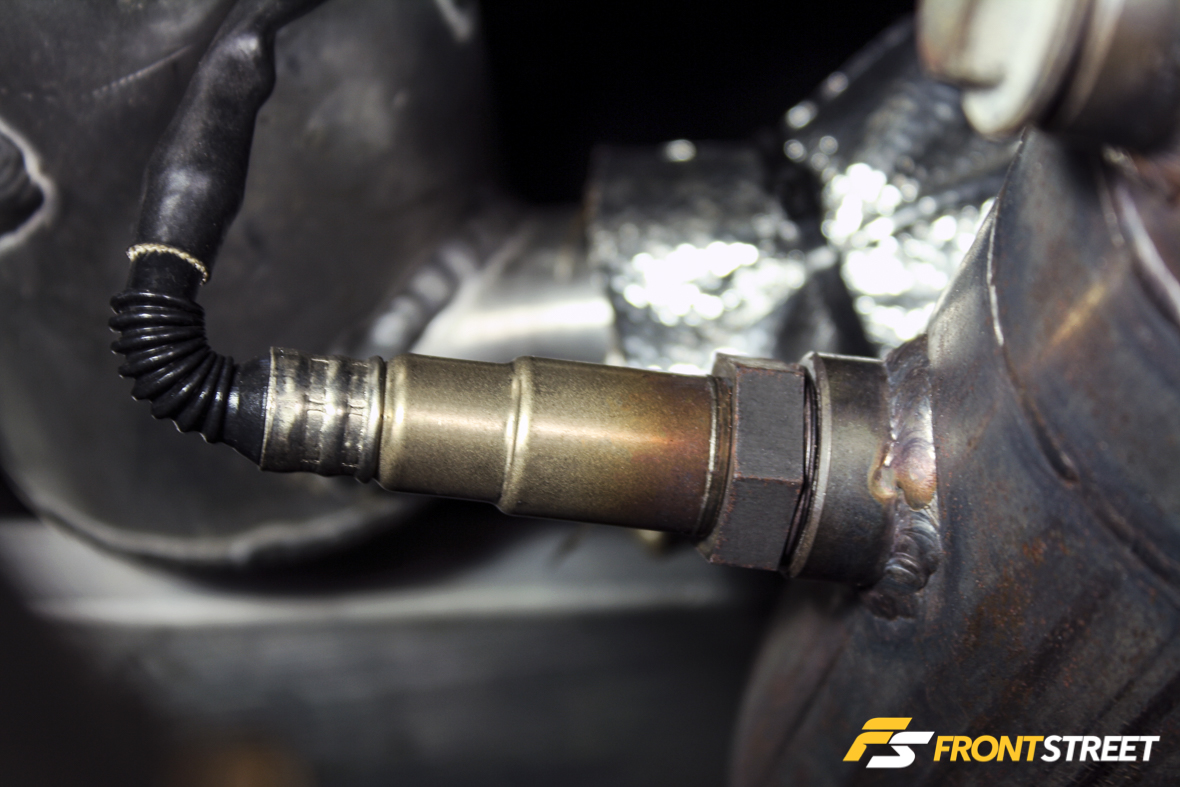
The Good Old Days Are Now
A little less than a decade ago, wideband sensor controllers were typically only found at dyno shops, and they cost thousands of dollars, making them virtually unattainable for the average grassroots enthusiast. In 2001 AEM changed that when it released its first versions of its wideband UEGO (Universal Exhaust Gas Oxygen Sensor) controllers for under $200.00. Originally launched as inline single and dual channel controllers, the company added a gauge version to the release, and that’s the product that set the tuning world on fire. The company’s AEM Wideband UEGO Controller Gauge (PN 30-4100) made this technology both affordable and portable. The ability to connect it to a programmable ECU with an analog output made it the perfect choice for tuners using closed loop feedback tuning, and its readout allowed for viewing A/F ratio when tuning for open loop, adjusting a carburetor, or for the end user to be able to monitor A/F ratios while driving. This product quickly became the most copied the company made, and spawned a cottage industry all unto itself.
But as technology improves, so do the components that support it. ECU processors have gotten faster and more capable, and closed-loop A/F ratio tuning (the ability to set an A/F ratio target in tuning software that the computer then uses to make fueling adjustments to maintain the target) have become more common, so it made sense for wideband sensor controllers to also improve. Since AEM was the first to market with a wideband UEGO gauge, it was only natural that we got to work developing the next generation of wideband technology.
The resulting effort is the company’s X-Series Wideband UEGO Air/Fuel Ratio Controllers, available with a gauge display and as an inline single channel controller, and also in a dual channel Motorsports version that is sealed in a billet aluminum enclosure and uses Autosport connectors. This technology has been independently lab tested against virtually every other aftermarket wideband controller available to have the fastest response time, averaging around 20ms, which is blisteringly fast. It’s 100-percent digital, and the proprietary development is significant enough to warrant an engineering patent, which the company received early this year.
Why Response Time Matters
A wideband’s response time matters for two main reasons, and the first is deadtime. Deadtime is the delay between when exhaust gas composition changes and when that change is reported by the O2 sensor. While flow of exhaust gases (transport delay) can affect deadtime, it is not the only source. Often, the sensing elements response to the gas is the largest contributor to deadtime when an engine is in high RPM under load.
When tuning an engine using wideband A/F ratio feedback control on an inertia dyno, deadtime affects the data you are looking at because it is reported in a different operating location than when it actually occurred. This means with long deadtimes, whatever changes you make to the base fueling will likely be in the wrong location. This can be particularly dangerous to high compression and high-boost forced induction vehicles, and EFI systems that use feedback control to auto tune. Reducing deadtime improves wideband feedback control, and can provide a safer, more powerful and accurate tune.
The second reason is transitional response time, basically tip in and when lifting off the throttle. These conditions can result in excessively lean (tip in) and rich (lifting) conditions, that most wideband sensor controllers can miss, or when combined with inherent deadtime, if they do report them they are not even close to when the actual event occurred. In addition to affecting the response of an engine if these are not ‘tuned’ out, over time these small incidences can collectively cause undue stress on a high performance engine and shorten its life.
In multiple magazine tests, AEM’s X-Series Wideband A/F ratio Controllers have proven themselves to “see” these changes and report them virtually when they occur, while other widebands that “saw” the change reported them much later and some did not report the transitional changes at all. When tenths and hundredths of seconds may mean the difference between a podium finish and simply packing up the trailer to go home, correcting a tune to account for transitional throttle changes becomes critical.
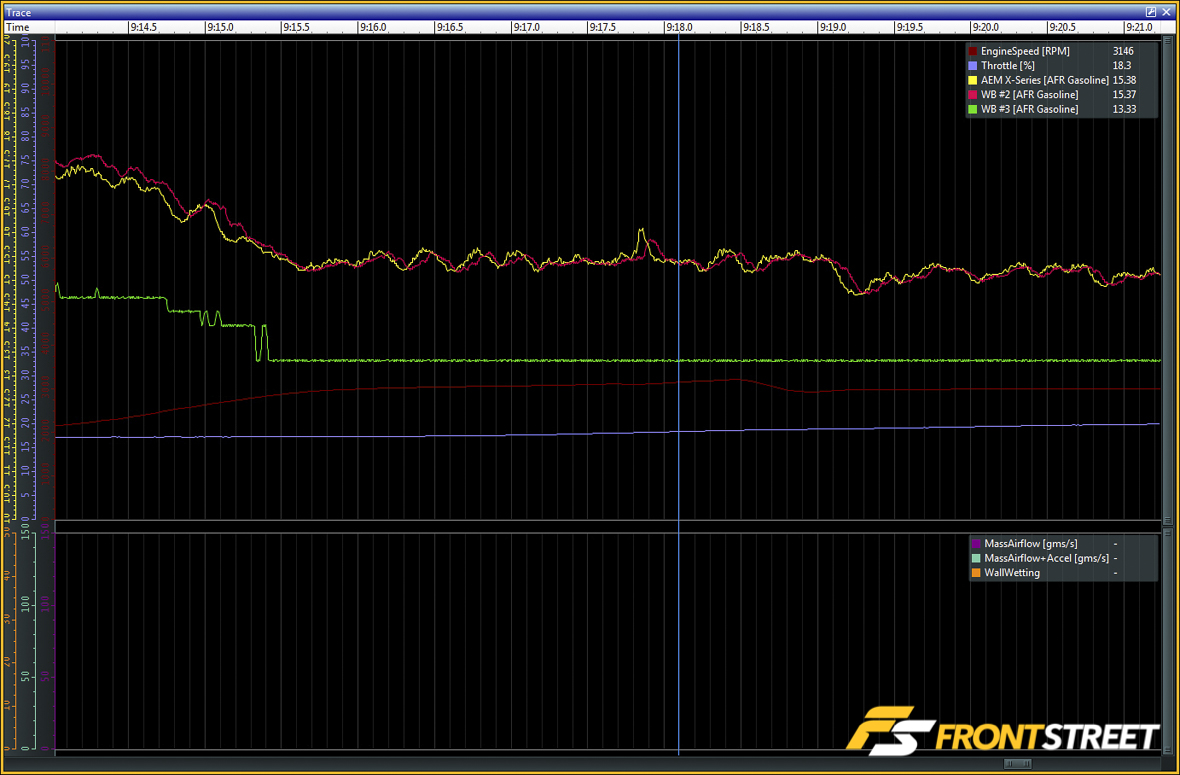
Here is a logged graph of the X-Series Wideband (yellow trace) and two competitor wideband controllers (red and green traces) on the same vehicle at steady state throttle. While the green trace is clearly off target, you can see that the red trace is close to the the X-Series and reporting similar values. However, if you study the fluctuations you will see that the X-Series is reporting fluctuations in A/F ratio sooner than the controller with the red trace. This X-Series gauge’s response time allows it to report A/F ratio closer to when an actual event change occurs, allowing tuners to more accurately map an engine for optimum power and reliability.
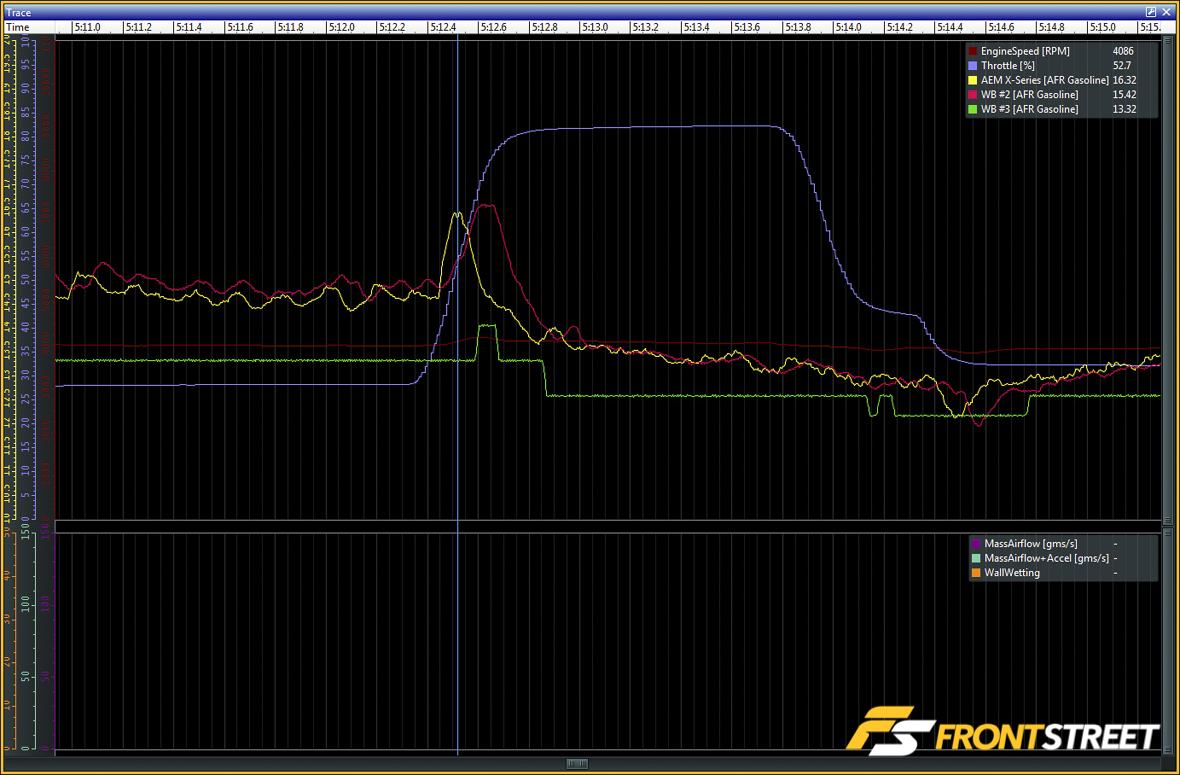
This log is of the same three controllers at tip in, with the two competitor gauges displaying A/F ratio in red and green. The cursor on the graph indicates where the lean condition occurs at tip in as detected by the X-Series wideband. While the controller with the red trace reacts to the lean condition it reports the change later than the X-Series, and the controller with the green trace misses the change almost entirely.
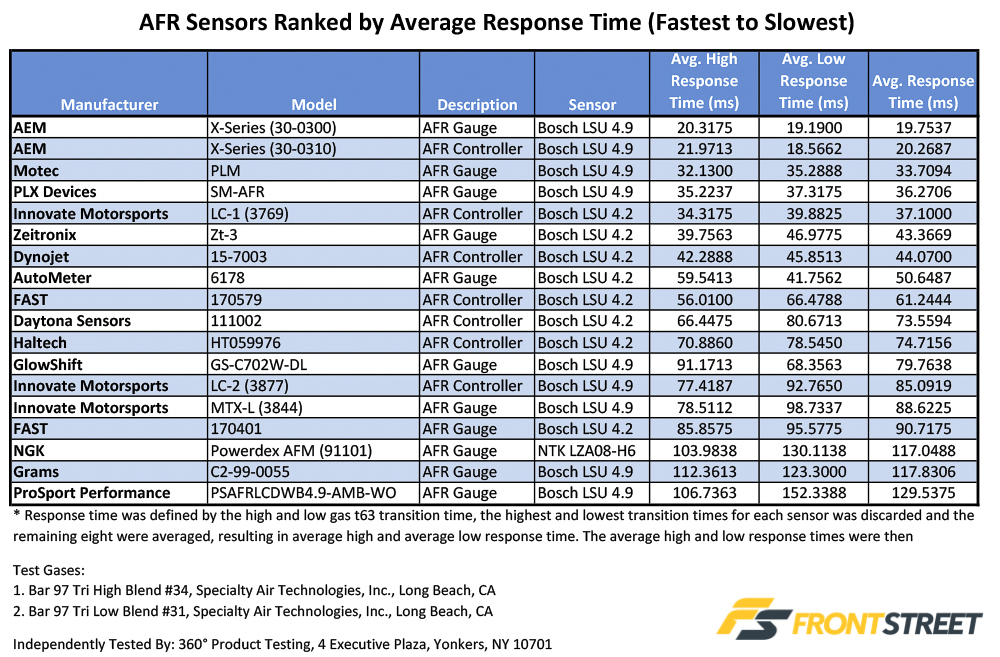
AEM had 360° Products Testing perform an independent test for response time against 17 other competitor widebands. The company performs independent testing for many industries, including government and for litigation cases. The results validated AEM’s claims that its patented digital wideband technology is the fastest responding.
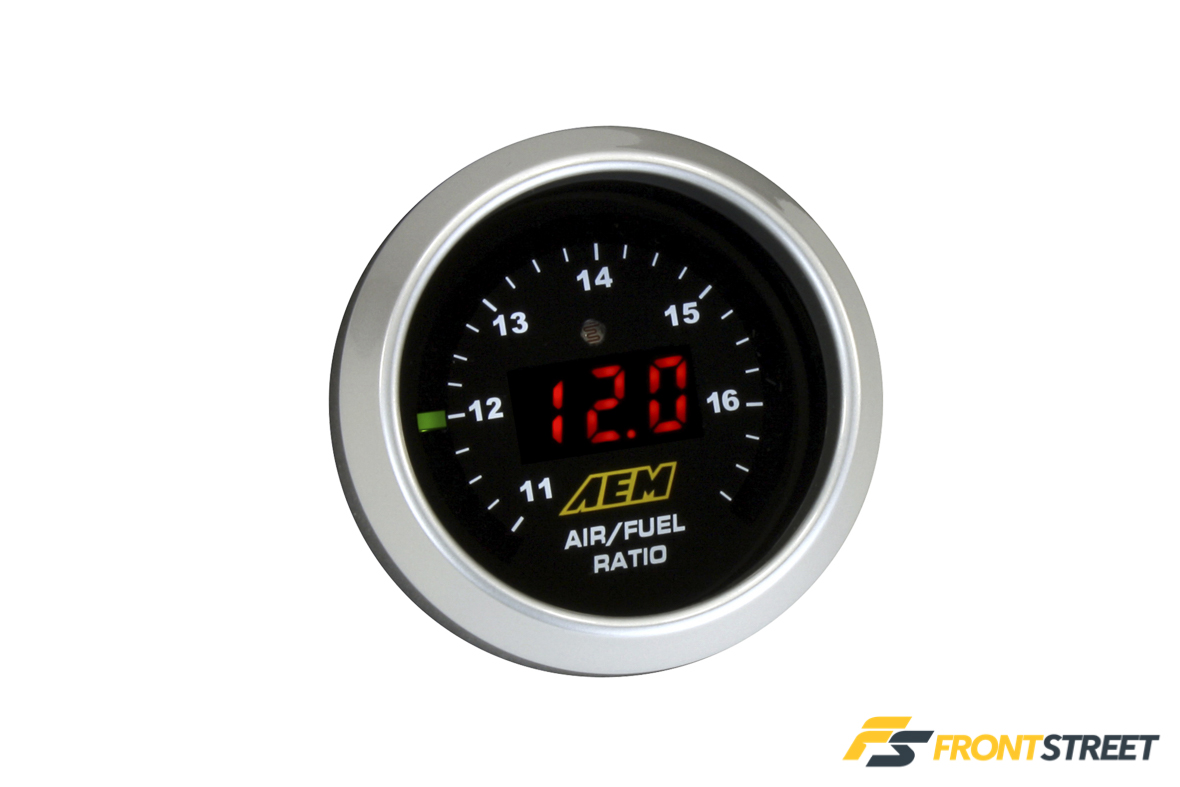
This is the gauge that started the tuning revolution and made wideband technology available to the masses, the 30-4100 AEM Wideband UEGO Controller gauge. In 2014 the company updated the gauge to use a Bosch 4.9LSU sensor, replacing the original Bosch 4.2LSU sensor it had used since its inception.
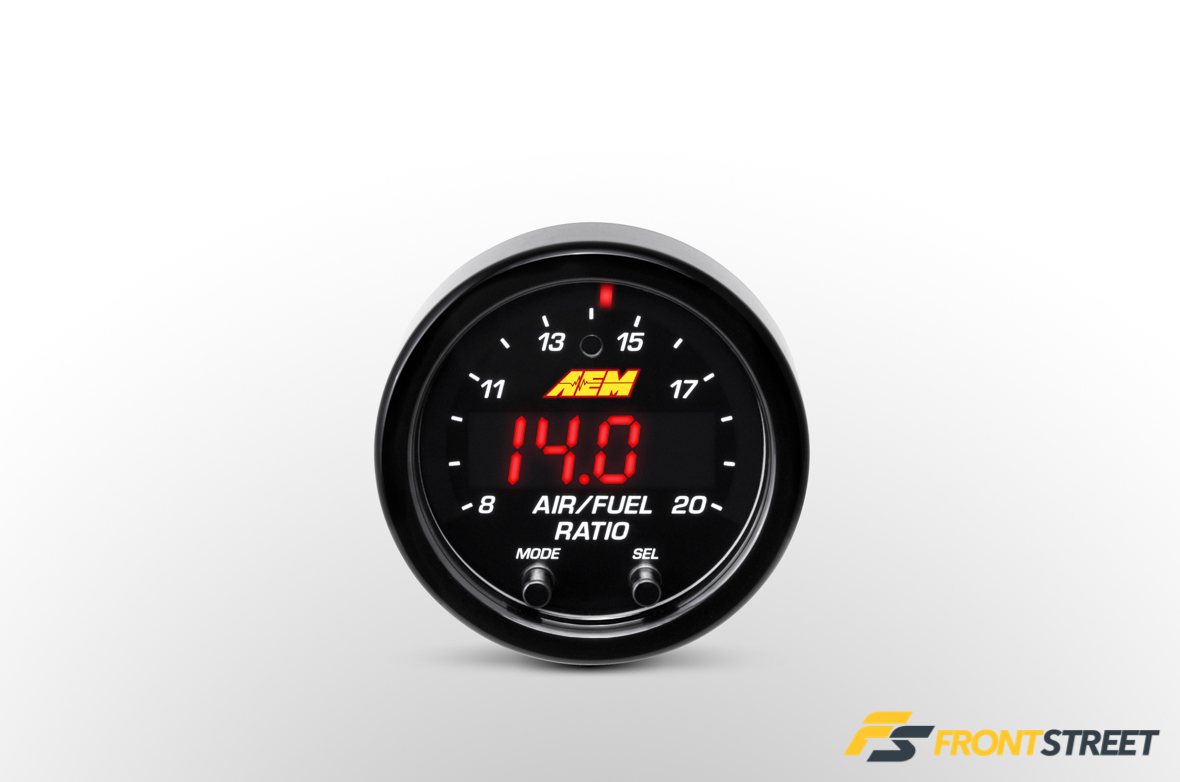
The X-Series Wideband AFR UEGO Controller gauge (also available as an inline controller) represents the company’s latest advancements in wideband monitors. It has patented digital technology that provides an average 20ms response time, reads in AFR, Lambda or O2%, outputs via a 0-5v analog, RS232 or AEMnet CAN bus, allows for use of the factory sensor calibration or free-air calibration and can display in 3 or 4-digits (which is great when tuning using Lambda). It’s also very thin which makes it easy to mount, and it boasts a large center LED that makes it easy to read.






